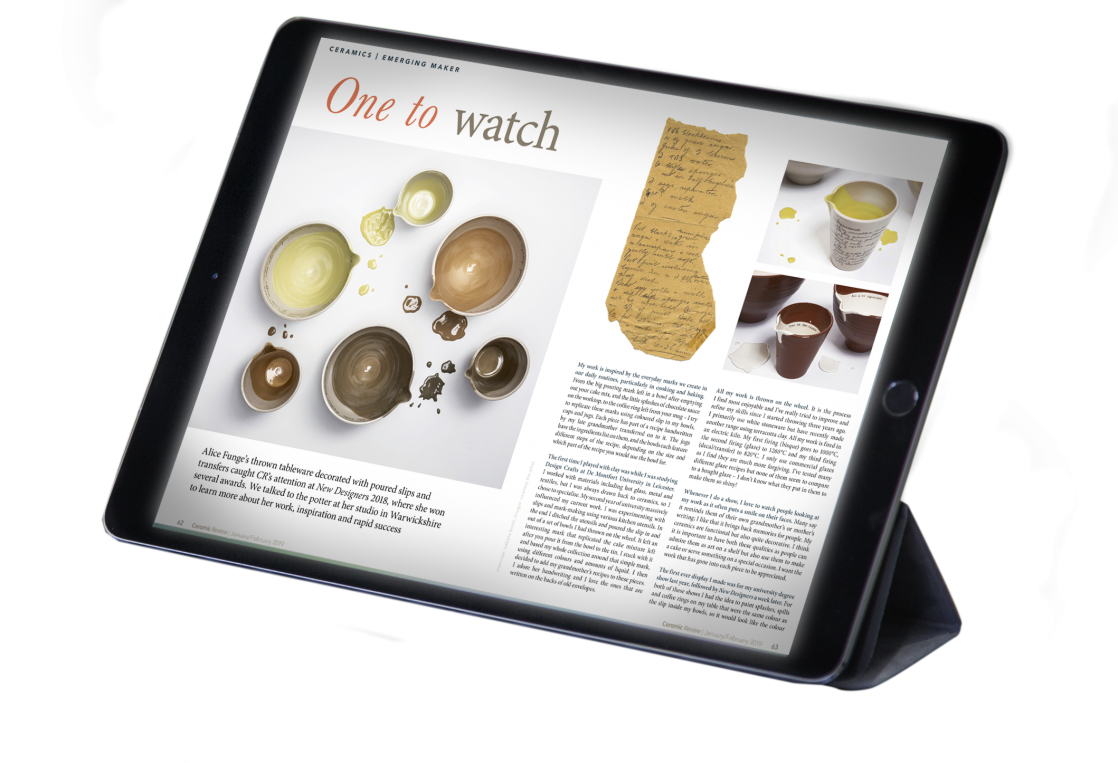Welcome to Ceramic Review
Ceramic Review is the magazine for contemporary and historical ceramics, ceramic art and pottery.
Ceramic Review Issue 334
July/August 2025
Ceramic Review is the magazine for contemporary and historical ceramics, ceramic art and pottery.
July/August 2025
Sue Pryke takes us through the techniques and processes behind slip-casting refined and functional ceramics.
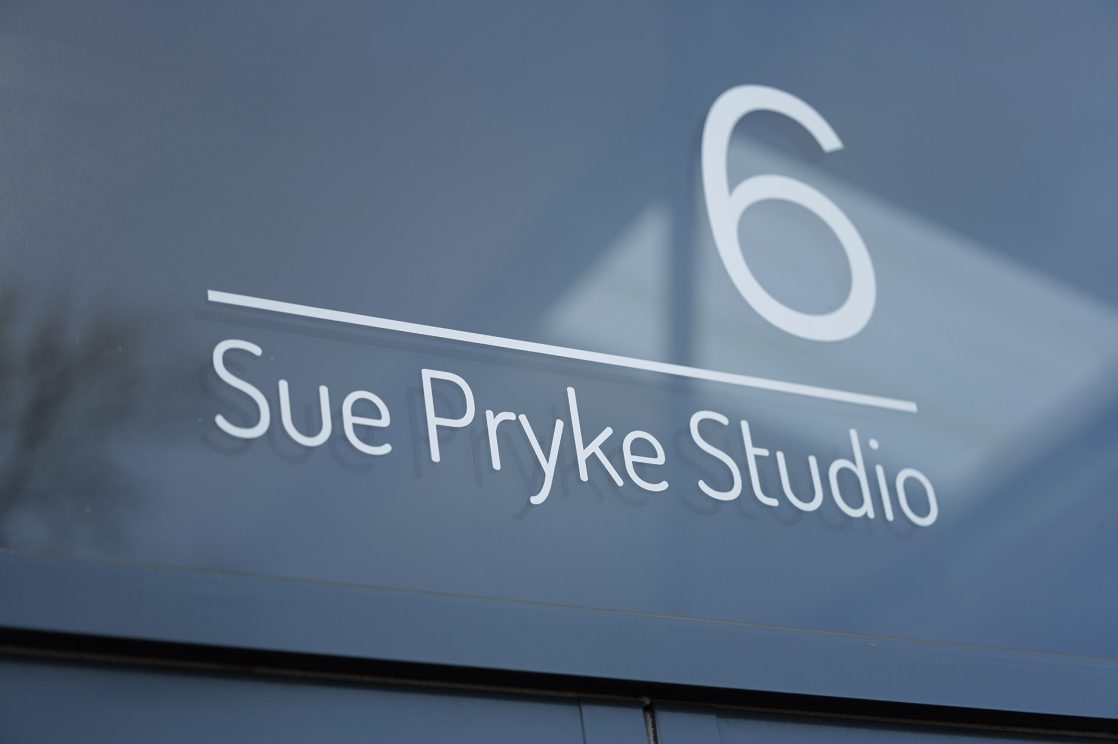
Sue Pryke masterclass for Ceramic Review Magazine.
I first picked up clay during my A levels and immediately made a connection with the material. It is gloriously responsive and bewitching. A part-time job at a local pottery with John Snowden in rural Lincolnshire, sparked an interest in production throwing – the need to have everything the same was so satisfying. In the context of my background this made complete sense, as I grew up in a farming family in the Lincolnshire Fens where the wide-open spaces are littered with continuity, rows and rows of crops all the same.
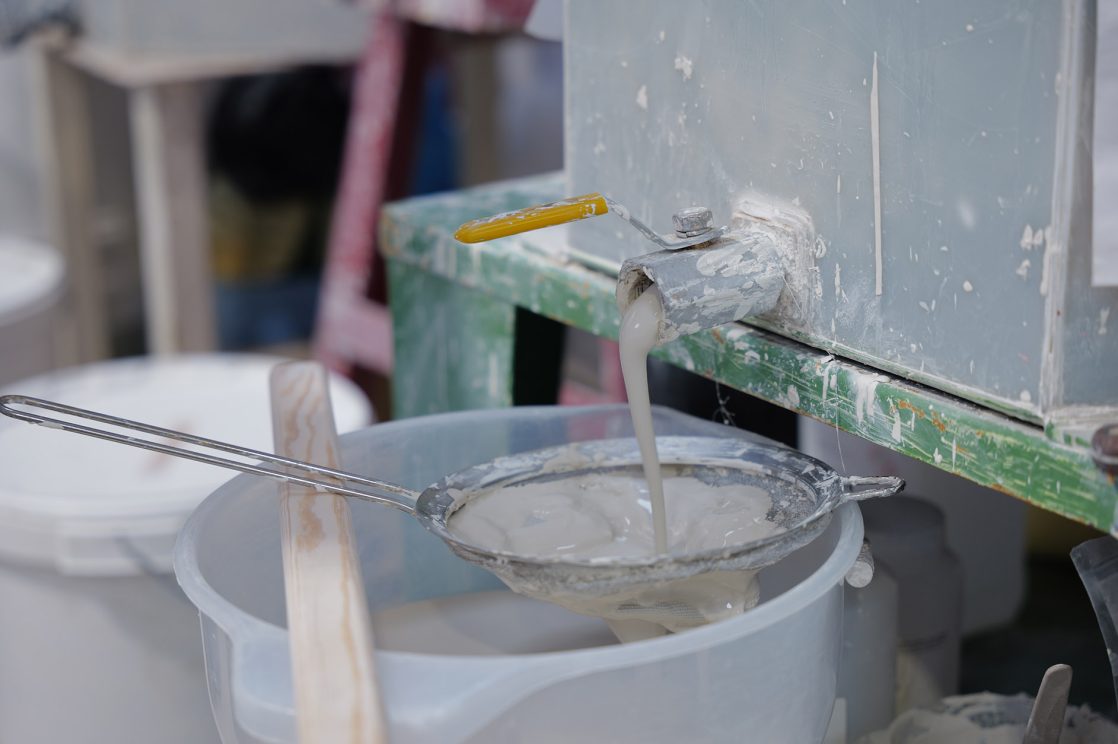
Sue Pryke masterclass for Ceramic Review Magazine.
It was during an Erasmus exchange in Holland, midway through my Ceramics and Glass degree course at Leicester Polytechnic, that I really started to explore slip-casting and model-making. Turning plaster on a lathe is akin to turning ribbons of clay on a thrown bowl. The qualities of the materials are similar, all endeavouring to find a particular attribute to describe.
The practical course at Leicester had good links to industry, with a business programme, live projects and competitions. In my third year, I entered the Royal Society of Arts student design competition and won. The prize was a placement in the Design Studio at Wedgwood, where, after the 10-week placement, I was taken on full-time as a junior shape designer.
Designing tableware and making 3D models in plaster, utilising traditional skills inherent in the model-making department, was fundamental to the design process. I find using craft skills that are now endangered particularly humbling and I still use them in my practice.
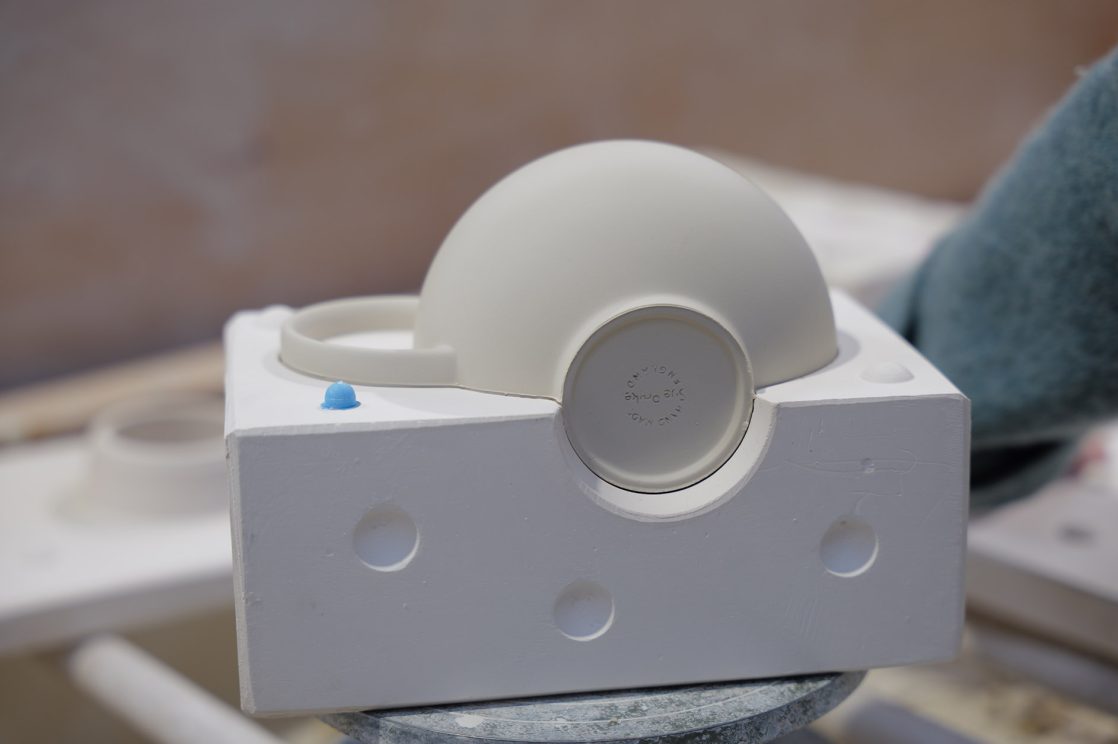
Sue Pryke masterclass for Ceramic Review Magazine.
Eventually, I went on to the Royal College of Arts to do an MA in Ceramics and Glass. At the end of the course, I had a chance meeting with the design coordinator from IKEA who liked the playful and colourful tableware I had developed for my graduate show. They were intrigued by my traditional background in craft coupled with the design skills I had learned from Wedgwood. He teamed me up with two Swedish designers, Anki Spets, a textile designer and Magnus Lundstrom, an industrial designer and together we developed a new collection called IKEA 365+. We won a Swedish design award in 1995 and many of the pieces are still in production today.
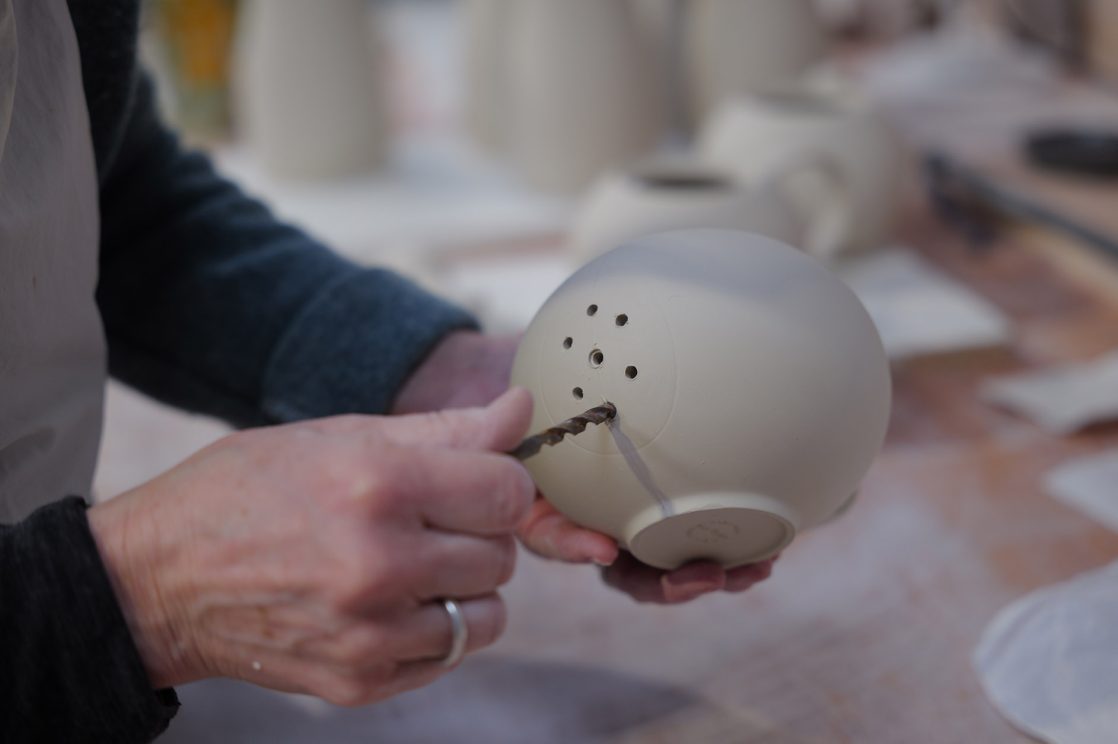
Sue Pryke masterclass for Ceramic Review Magazine.
I have continued to work for IKEA since 1994, along with multiple high street retailers including Marks & Spencer and John Lewis. In 1998, I was offered a role as course leader at De Montfort University and took on the post two days a week, allowing the rest of the time for freelance design work and studio practice.
After many years of designing for other companies, I felt compelled to return to slip-casting and came back to working with clay full time in 2013.
The style of my work has influences from traditional tableware and a nod to Wedgwood’s Jasperware with the coloured clay body. The pared-back form has a direct correlation to having worked for a Swedish design company for the best part of 30 years.
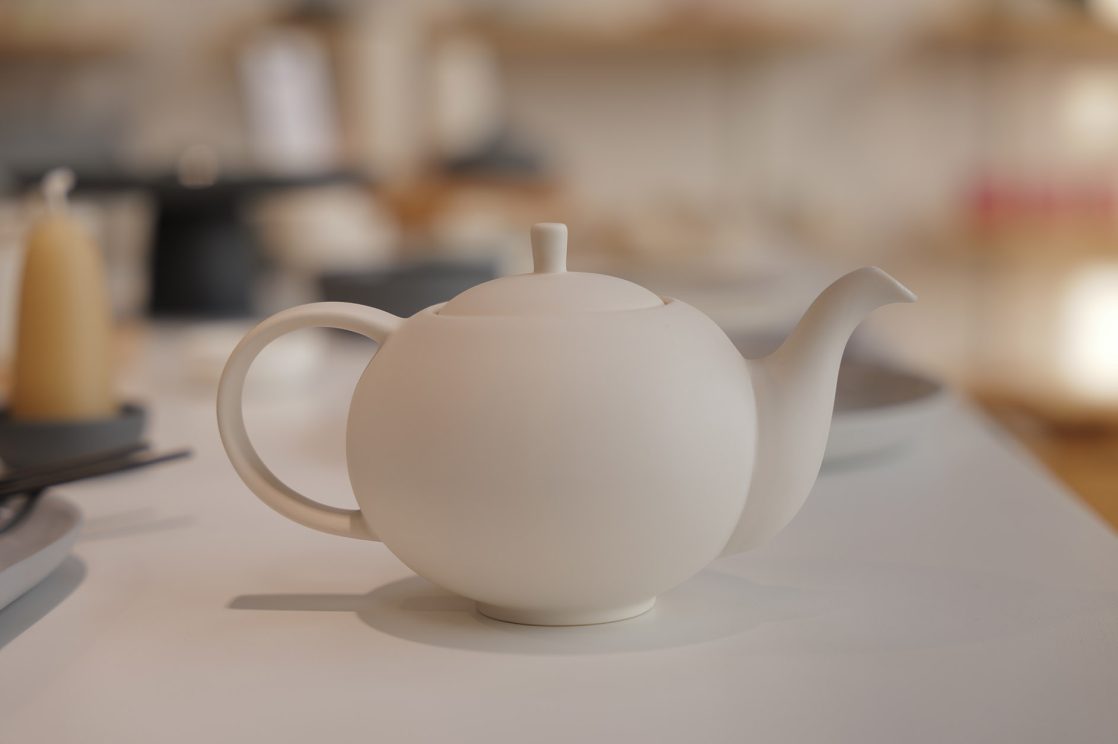
Sue Pryke masterclass for Ceramic Review Magazine.
I am inspired by domestic ware, the everyday and the ordinary and the interaction we have with objects. Those small details and preferences that reflect the intuitive decisions we make when we choose a cup to take from the cupboard for a cup of tea.
Functional tableware is key to my practice, endeavouring to balance the rigours of slip-casting, which provides the continuity of form, with producing something that has familiarity, sits comfortably in the home and is essentially useful and well-crafted.
For more details visit suepryke.com; @suepryke
Ceramic Review is the international magazine for contemporary and historical ceramics, ceramic art and pottery.
As a subscriber to the print magazine, you also get FREE access online to the entire Ceramic Review archive – going all the way back to our first issue in 1970. Digital subscriptions are online only.
